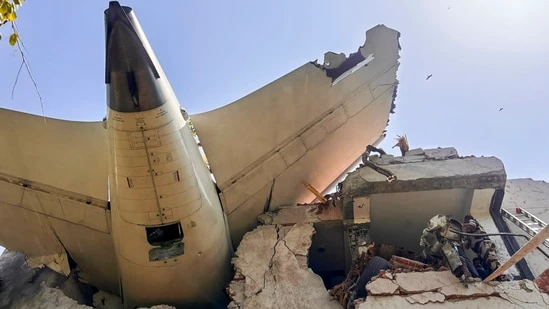The preliminary report into the crash of the Air India Ahmedabad to London flight on June 12 was released exactly one month after the disaster on Saturday.
The AAIB report gave significant insights into what happened in the minutes and seconds leading up to the crash that took 260 lives, including 241 of the 242 people onboard. But it also deepened some mysteries.
Here are some questions it answered, and some it didn’t.
WHAT CAUSED THE CRASH?
Both engine fuel switches “transitioned from RUN to CUTOFF position one after another with a time gap of 01 sec”, roughly three seconds after the plane lifted off. This cut fuel supply to both engines, causing loss of power and, therefore, lift. However, the report doesn’t determine what caused the switches to move.
POTENTIAL CAUSES RULED OUT
Weather, bird strike, aircraft configuration, weight and balance, fuel quality, engine problems
WERE THE PILOTS RESPONSIBLE?
We don’t know yet. The cockpit voice recording reveals one pilot asked the other why he cut off fuel, and the colleague responded he did not. It is a significant clue in suggesting the fuel cut-off may have been unintentional.
WHAT HAPPENED IN THE COCKPIT?
First Officer Clive Kunder was the pilot flying while Captain Sumeet Sabharwal was monitoring. The report gives a paraphrased exchange between them: “one of the pilots is heard asking the other why did you cutoff [fuel]. The other pilot responded that I did not do so.”
COULD THE CREW HAVE RECOVERED PLANE?
The pilots made a valiant bid to save the aircraft. Within 10-14 seconds of fuel cutoff, they moved both switches back to “RUN”. However, recovery was impossible due to insufficient time and altitude. Jet engines need several minutes and higher altitudes to restart.
WHAT WAS THE SWITCH ADVISORY?
The 2018 FAA bulletin concerned fuel control switch locking mechanisms that prevent inadvertent movement. When disengaged, switches could move more easily through vibration, contact, or other factors. The FAA didn’t mandate fixes, only recommending inspections to ensure proper locking engagement.
WHAT HAPPENS NEXT?
This preliminary report’s findings could shift significantly as more evidence emerges. The AAIB states, “information is preliminary and subject to change”. A final report determining probable cause is expected to take months or years to complete.
